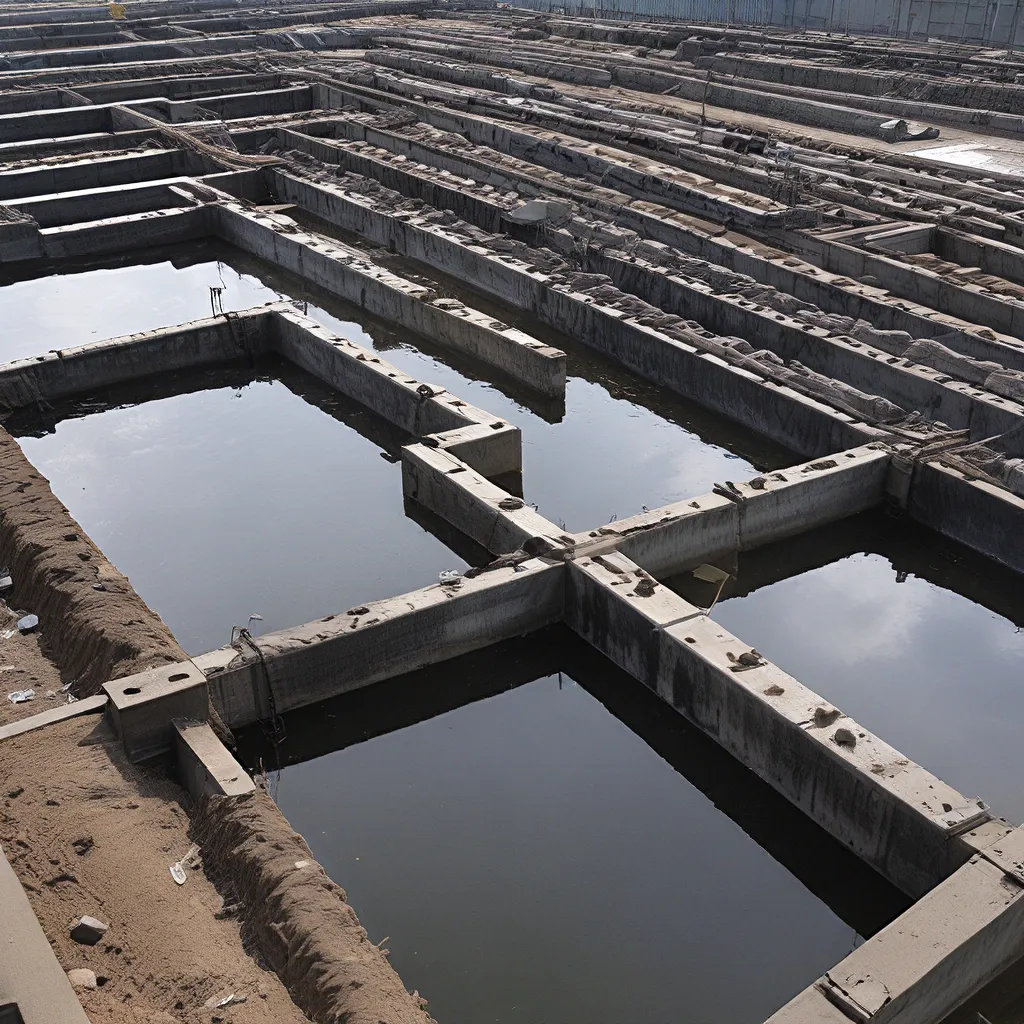
As the world grapples with the ever-growing challenge of sustainable waste management, the spotlight has turned to a particularly complex and often overlooked aspect – the treatment and reuse of wastewater sludge. This material, a byproduct of the water purification process, has the potential to be a valuable resource rather than a burden.
Unlocking the Potential of Wastewater Sludge
I’ve always been fascinated by the intricate web of natural cycles and the way we, as humans, can tap into these systems to create a more sustainable future. Wastewater sludge, often seen as a waste product, is a prime example of this opportunity. It’s a rich source of organic matter, nutrients, and even potential energy – if we just think outside the box.
One of the most promising avenues for sludge management is valorization, the process of converting this material into valuable products or energy. This approach not only reduces the environmental impact of sludge disposal but also creates new revenue streams for wastewater treatment facilities.
Recent studies have highlighted several innovative valorization strategies, each with its own unique benefits and challenges. From extracting valuable nutrients like phosphorus and nitrogen to converting the organic matter into biofuels, the possibilities are truly exciting.
Nutrient Recovery: Unlocking the Power of Sludge
One of the most promising valorization approaches is nutrient recovery. Wastewater sludge is a rich source of essential plant nutrients, such as phosphorus and nitrogen, which are crucial for agriculture and food production. By extracting and refining these nutrients, we can create high-quality fertilizers that can be used to enrich soils and boost crop yields.
Cutting-edge technologies have made nutrient recovery a viable and sustainable solution. Through processes like struvite precipitation and ion exchange, we can efficiently recover these nutrients and reintroduce them into the agricultural system. This not only reduces the need for energy-intensive and environmentally damaging synthetic fertilizers but also helps to close the nutrient loop, keeping valuable resources in circulation.
Imagine a future where wastewater treatment plants become hubs of nutrient production, supplying farmers with the essential building blocks for healthy, thriving crops. It’s a vision that’s becoming increasingly attainable, thanks to the tireless work of researchers and innovators in this field.
Bioenergy from Waste: Powering a Sustainable Future
Another exciting aspect of sludge valorization is its potential to contribute to the renewable energy revolution. The organic matter present in wastewater sludge can be converted into biofuels, such as biogas or bioethanol, through various biological and thermal processes.
Emerging technologies have made it possible to extract and refine these biofuels, transforming wastewater treatment plants into self-sustaining energy producers. Imagine a future where your local wastewater treatment facility not only cleans the water but also generates renewable energy to power the surrounding community.
It’s a concept that’s already being explored and implemented in various parts of the world. The benefits are manifold – reduced reliance on fossil fuels, decreased greenhouse gas emissions, and a more circular, sustainable approach to resource management.
The Circular Economy Opportunity
As we delve deeper into the world of wastewater sludge valorization, it becomes evident that this is not just an environmental imperative but also a economic opportunity. By embracing the principles of the circular economy, we can transform this “waste” into a valuable resource, creating new revenue streams and reducing the overall cost of wastewater treatment.
Imagine a world where wastewater treatment plants are not just necessary infrastructure but thriving hubs of resource recovery and value creation. It’s a future that’s within our grasp, but it will require a shift in mindset and a concerted effort from industry, policymakers, and the public.
The Road Ahead: Challenges and Opportunities
Of course, the path to widespread sludge valorization is not without its challenges. Technological barriers, regulatory hurdles, and public perception issues all need to be addressed. But I believe that with the right approach, we can overcome these obstacles and unlock the true potential of this untapped resource.
One of the key challenges is the variability and complexity of wastewater sludge composition, which can make standardized treatment and valorization processes difficult to implement. However, researchers are making great strides in developing flexible and adaptable technologies that can handle this diversity.
Another issue is the need for significant investment in infrastructure and research to scale up these innovative valorization strategies. But as the benefits become more apparent, I’m confident that we’ll see increased funding and support from both the public and private sectors.
And let’s not forget the importance of public education and engagement. It’s crucial that we help people understand the value of wastewater sludge and the exciting possibilities for its reuse. By fostering a sense of ownership and responsibility, we can build a more informed and invested community.
Embracing the Future of Wastewater Sludge Management
As I reflect on the incredible potential of wastewater sludge valorization, I can’t help but feel a sense of excitement and optimism. This is a field that is ripe for innovation, where the boundaries of what’s possible are constantly being pushed.
By embracing these innovative valorization strategies, we can create a more sustainable, circular, and resource-efficient future. Wastewater treatment plants can become hubs of nutrient production, bioenergy generation, and resource recovery, contributing to the overall health and resilience of our communities.
It’s a vision that I’m passionate about, and I believe that with the right combination of technology, policy, and public engagement, we can make it a reality. So let’s roll up our sleeves and get to work, because the future of wastewater sludge management is brighter than ever before.